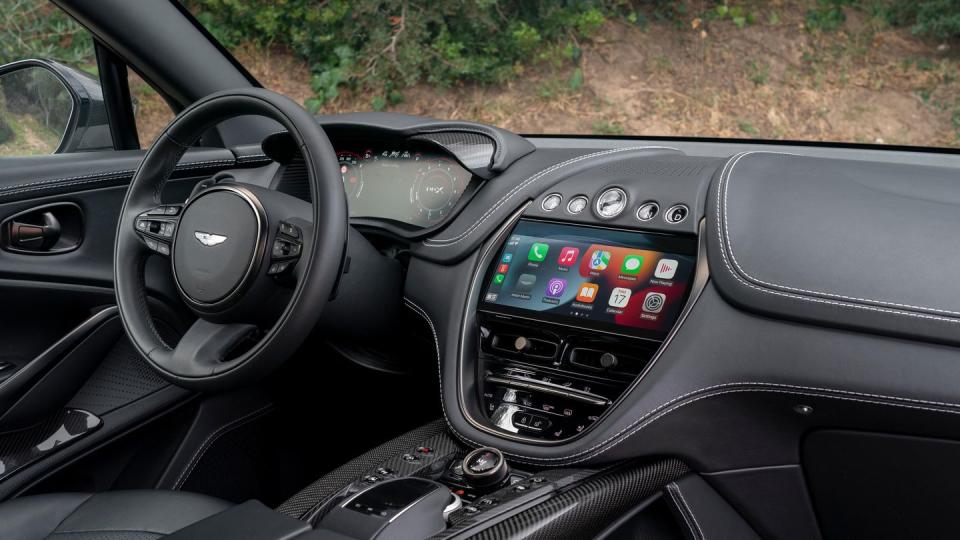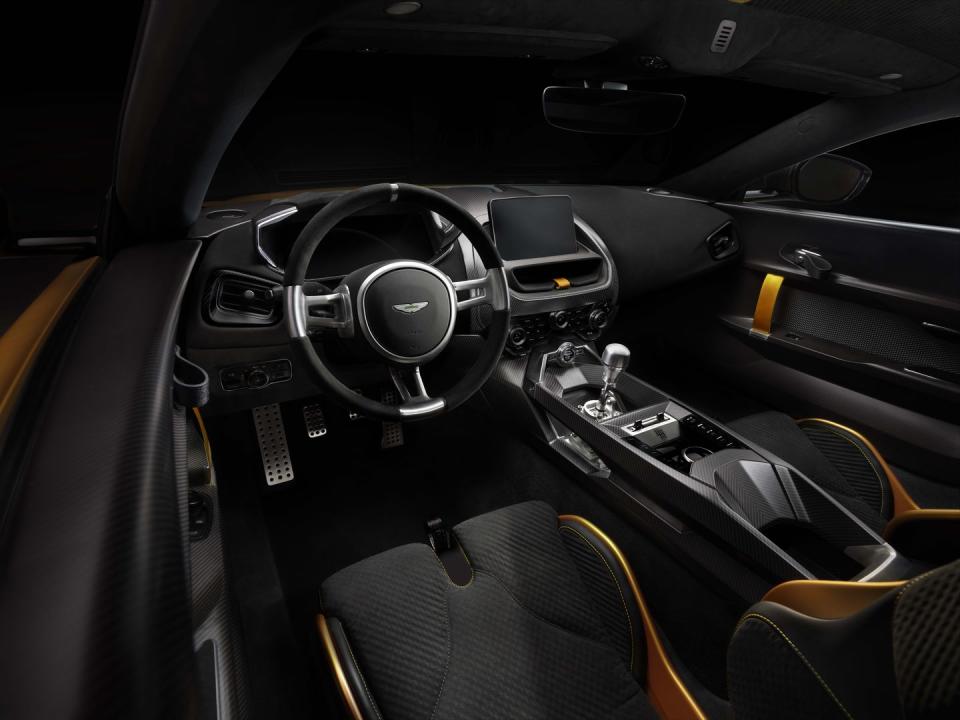Aston Martin Thinks We've 'Reached Peak Screen,' Commits to Physical Interior Buttons

As digital interfaces become more integrated into our lives and our cars, Aston Martin is picking its battles carefully. The British automaker will continue providing physical switches rather than screens for essential functions like HVAC, audio, and drive modes, but will leave its infotainment system to Apple and its CarPlay tech over attempting its own platform.
“We’ve all reached peak screen,” Alex Long, Aston Martin’s head of product and market strategy, told Road & Track. “People are frustrated by them in some of the research we’ve done, particularly in performance cars. They don’t want their eyes off the road.”
This position is reflected in the Aston Martin Valiant’s analog-focused interior, physical switches for major controls, and bare steering wheel. But before the automaker's troubled infotainment system was overhauled in the DBX's interior upgrade, Aston used dated software from Volvo, Garmin, and then partner Mercedes-Benz, but struggled to keep up with the rest of the industry and luxury competitors on the digital technology front. Valiant, designed with driving experience front-of-mind, reflects their intentions for infotainment going into the next era of their development.
It’s worth noting that Valiant’s 38 models, which cost around $2.5 million (converted from £2 million), live in a highly exclusive sector of the auto industry, where automakers can experiment with new tech and new ideas—or a return to old ones—for their most elite buyers. However, survey data seems to suggest that dissatisfaction with infotainment systems is only on the rise as manufacturers attempt to implement their own technology.

“Built-in infotainment systems are a prime example of a technology not resonating with today’s buyers,” J. D. Power announced in its 2023 APEAL Study. According to the study, less than half of owners prefer their built-in systems for common tasks like phone calls, voice recognition, and navigation. But a 2023 survey by McKinsey found that owners are satisfied with services like Apple CarPlay or Android Auto. Eighty-five percent of owners reported that they prefer CarPlay over their car’s built-in system, and almost half of car buyers reported that they wouldn’t buy a car without CarPlay or Android Auto. Some manufacturers have taken a bet against these services, with GM notoriously deciding to trade CarPlay for its own platform. Aston doesn’t like the odds.
“I think it’s an inevitable merge. You fight against that and spend billions doing your own software, when actually what people are there for is mechanical,” said Long. “What brings an Aston alive is the way we tune suspension, the way we style it, the way we mold them, and all those—that’s really hard traditional techniques. But we wouldn’t try and make our own tires. There’s two or three companies in the world who are experts at doing that and fit OEM tires, and that’s why we turn to them. On software, equally, Apple is a good example and Android are doing the same.”
One of the biggest complaints about touch screens in cars is that they act as a distraction and take drivers out of the experience. It may be exciting to be able to control major functions, control audio, and sing karaoke via a touch screen, but for Aston Martin and other luxury automakers concerned with functionality and driver-car connection, staying off the screens may be the best option.
You Might Also Like

 Yahoo Finance
Yahoo Finance 